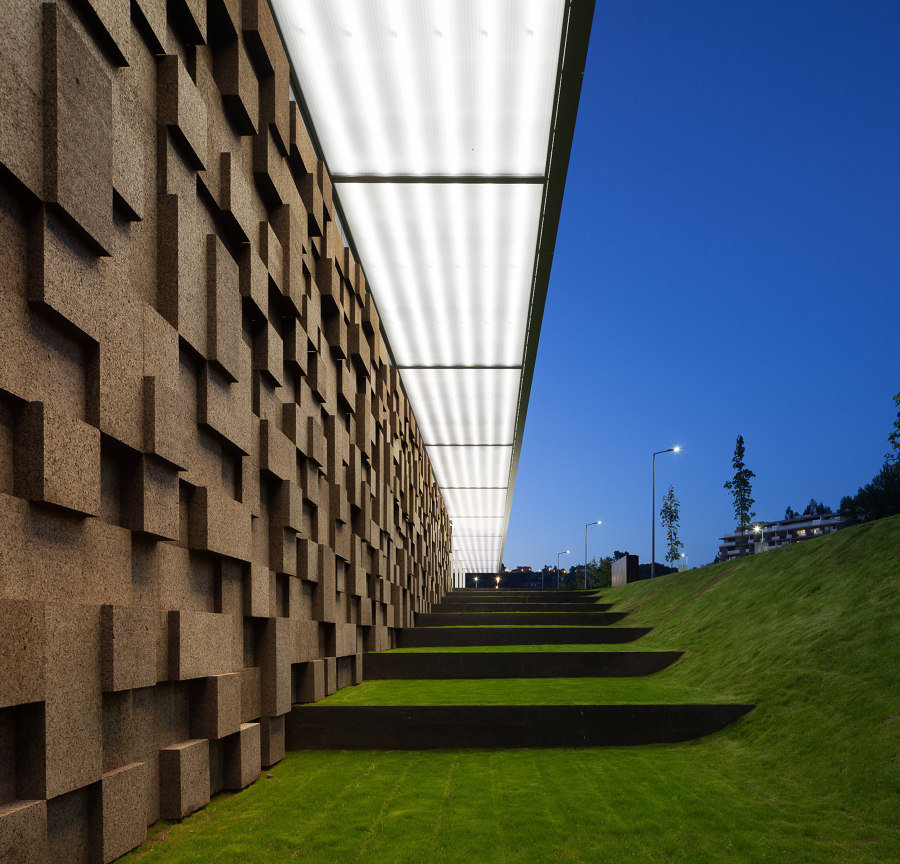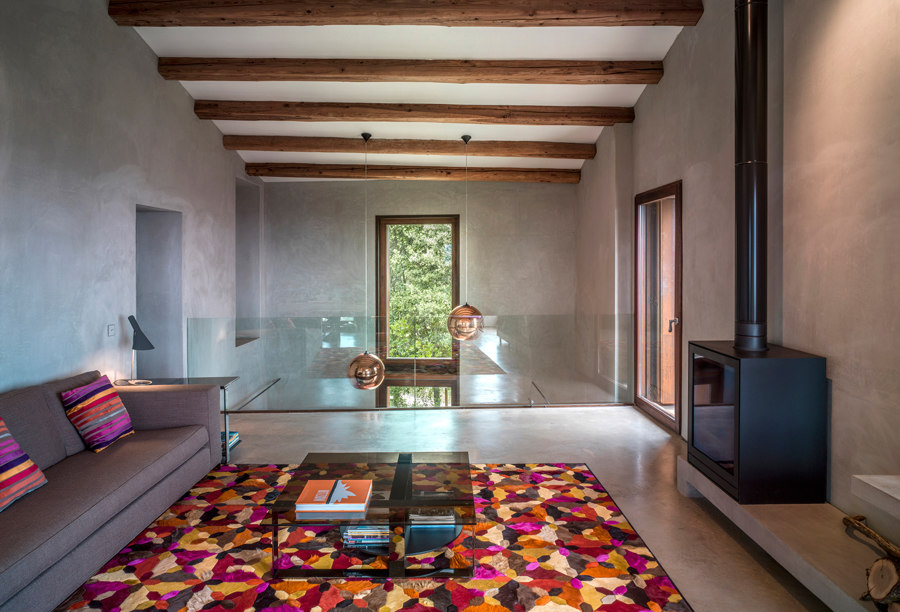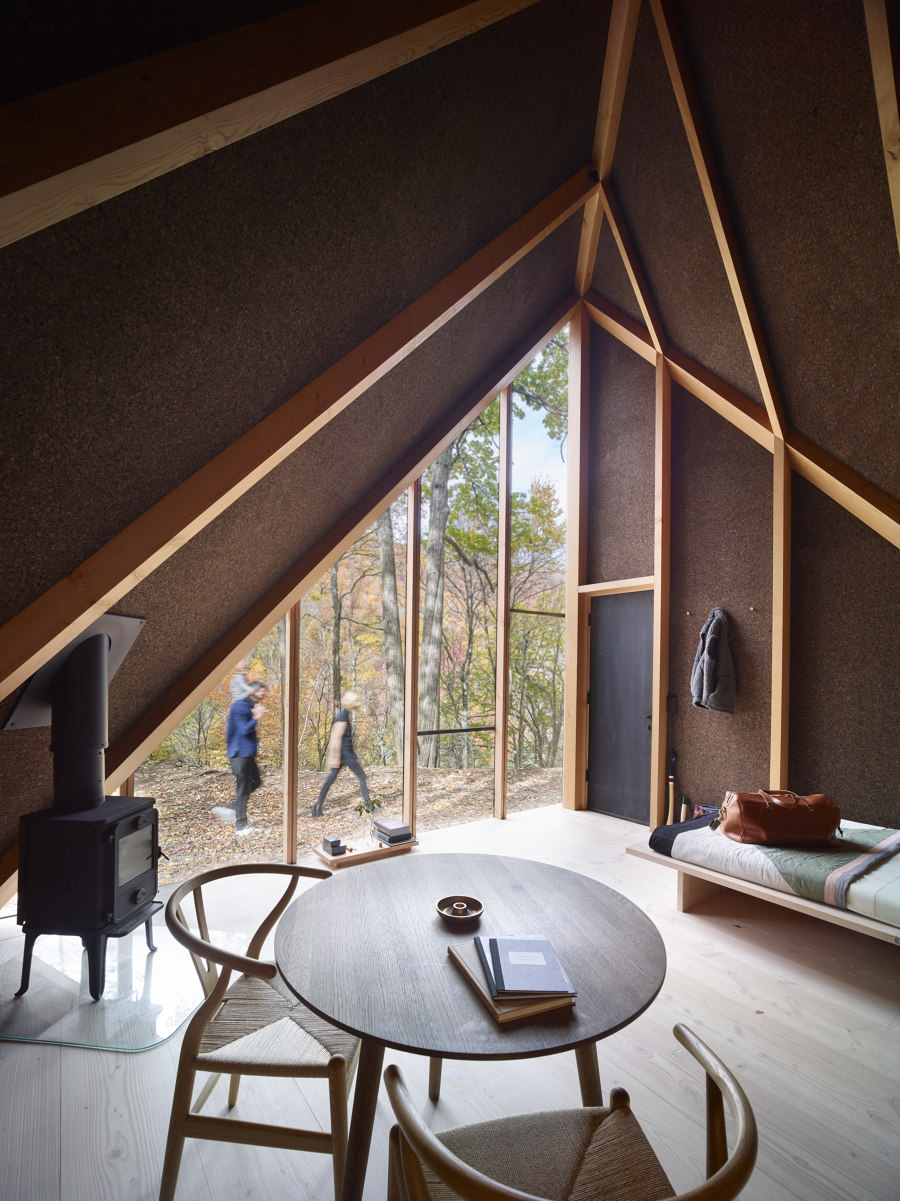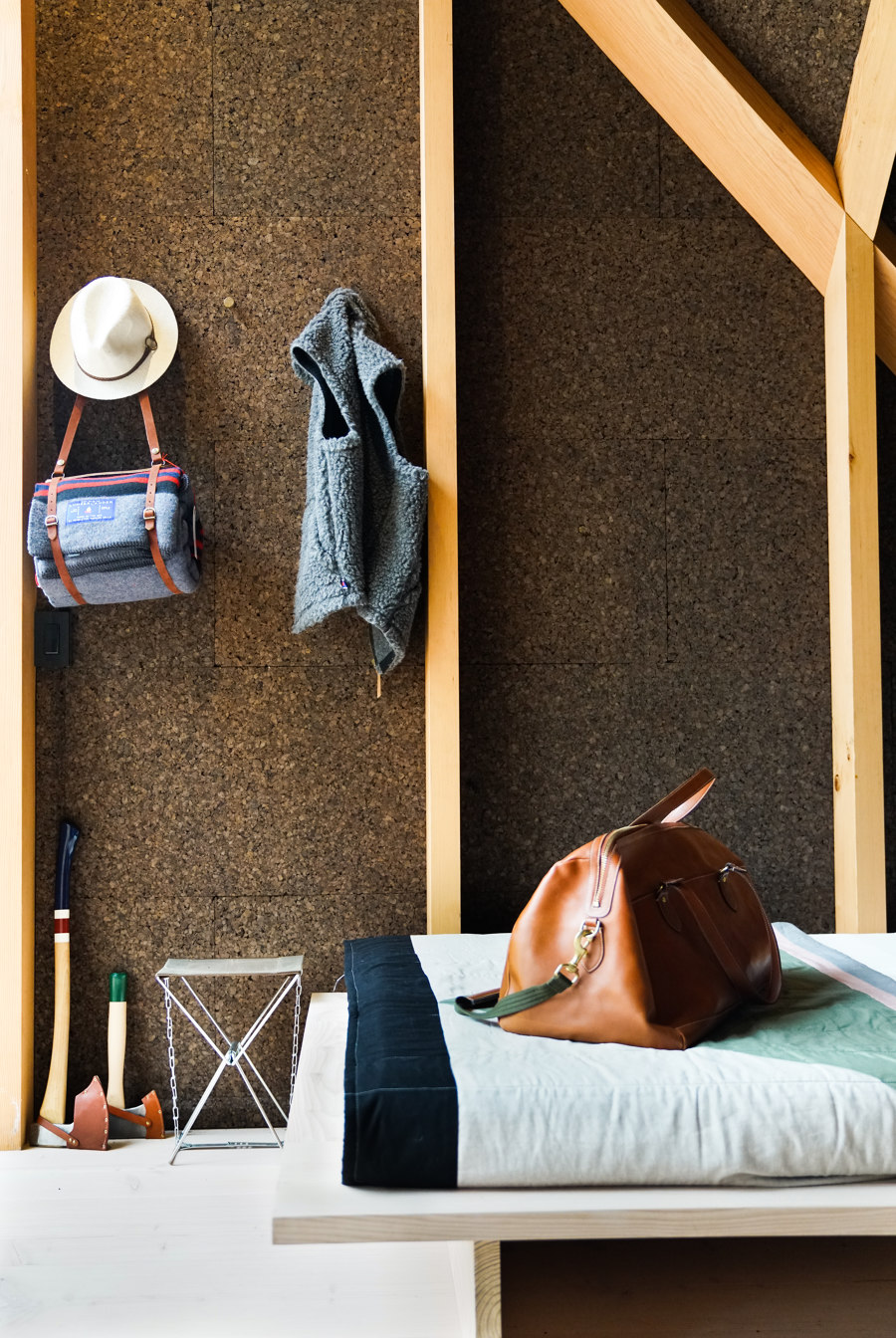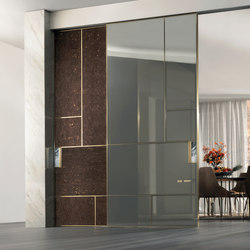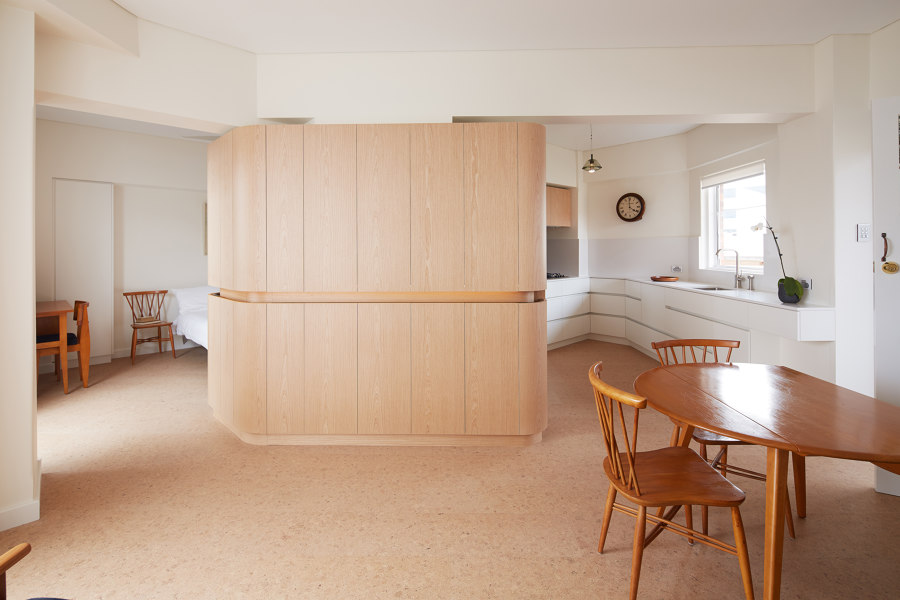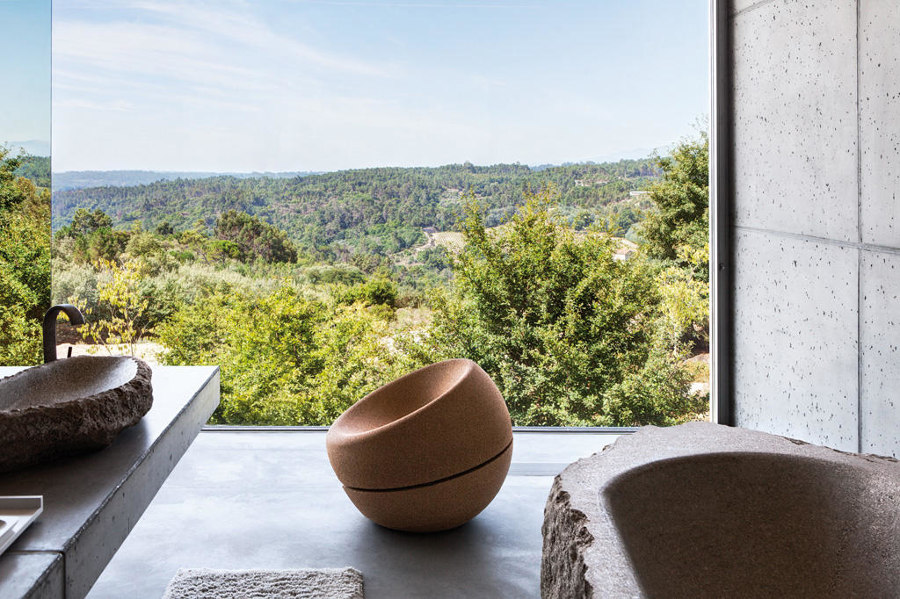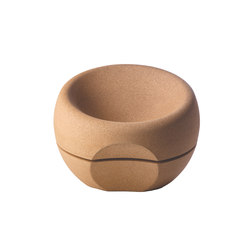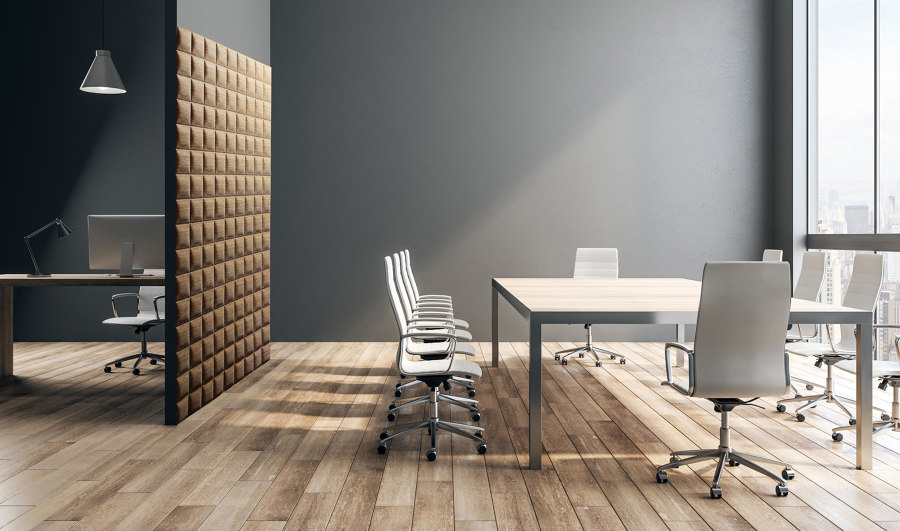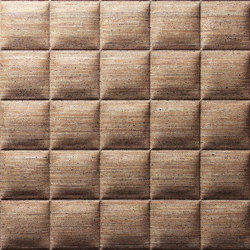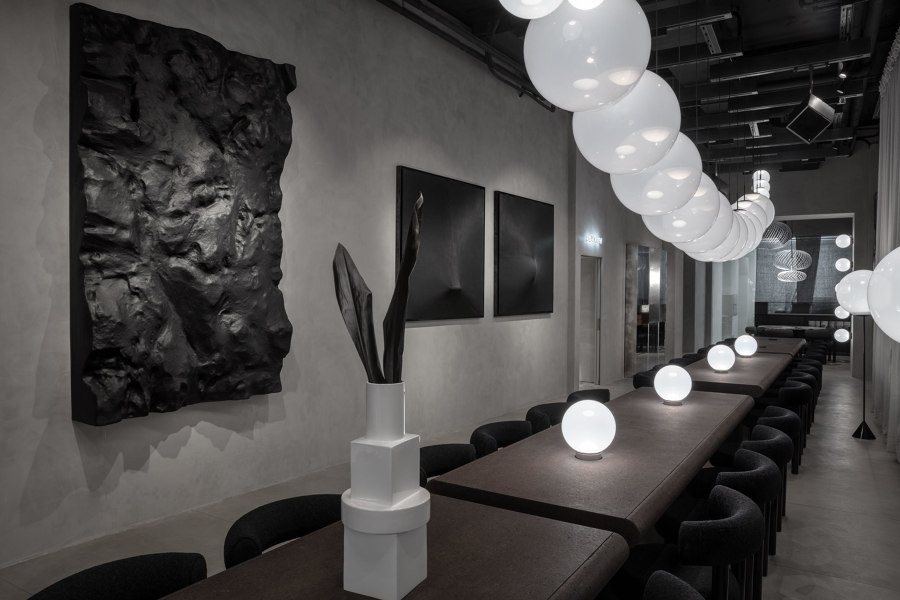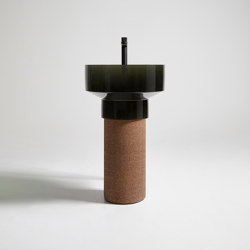Put a cork in it: seven reasons to keep talking about cork
Text by James Wormald
20.02.23
Not just for keeping wine in its place, cork is a truly circular and sustainable material that could be a solution to help keep humanity afloat, too.
The sustainability-led Gymnastics Training Centre of Guimares wrapped the circular material cork around its facade. Photo: José Campos

The sustainability-led Gymnastics Training Centre of Guimares wrapped the circular material cork around its facade. Photo: José Campos
×Cork is a natural material that’s easy to recycle and reuse. And yet, in the world’s search for circularity, it’s wood that’s more often seen as a saviour. Wood and wood derivatives of all shapes and sizes, from straws to skyscrapers – or ‘plyscrapers’, give us a warm, eco-fuzzy feeling inside when we use them. But while both wood and cork literally grow on carbon-fighting trees – cork is produced by stripping just the bark of the cork oak tree – cork production allows the tree to remain standing, whereas wood cuts it down in its prime. But can we really apply the rough, spongy brown stuff as a high-end product and construction material? Of course we can. Here’s the how and the why.
The Gymnastics Training Centre of Guimares features an exterior arrangement of protruding blocks of cork, highlighting the material’s use and form. Photos: José Campos
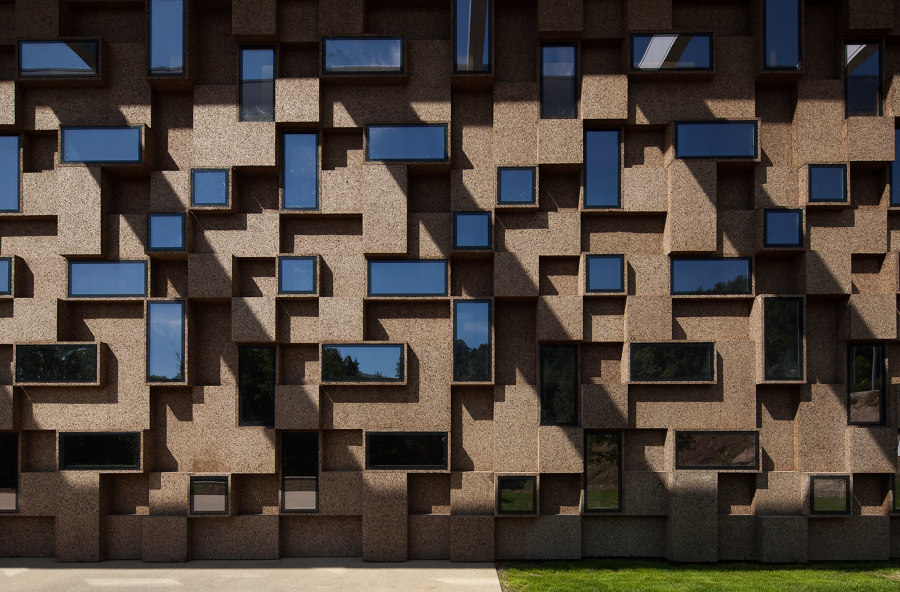
The Gymnastics Training Centre of Guimares features an exterior arrangement of protruding blocks of cork, highlighting the material’s use and form. Photos: José Campos
×Cork is sustainable, circular and environmentally friendly, in more ways than one
The cork oak forests of Portugal, responsible for almost half the world’s production of the wonder material, are protected in law, so vital are they to both the country’s economic and environmental infrastructure. Harvested not felled, mature cork oak trees are stripped every decade of their lifetime, offset more carbon than ordinary trees and their thick bark acts as a natural barrier to stop forest fires. The focus, however, does not always need to be on the environment. The Gymnastics Training Centre of Guimares, for example, selected cork for the facade of its environmentally-minded project for these sustainable attributes, but the building’s careful arrangement of displaced volumes ensures it stands out for its looks, too.
Villa CP in Girona, Spain (top), and House in Grândola, Portugal (middle, bottom) hide cork insulation between exteriors and interiors. Photos: Jesus Granada (top), Francis Nogueira (middle, bottom)
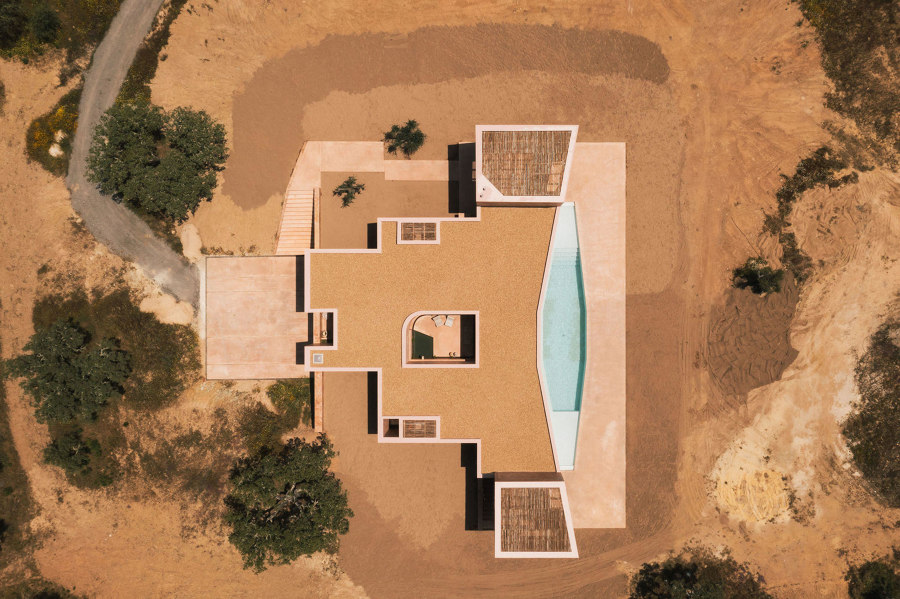
Villa CP in Girona, Spain (top), and House in Grândola, Portugal (middle, bottom) hide cork insulation between exteriors and interiors. Photos: Jesus Granada (top), Francis Nogueira (middle, bottom)
×Cork is a great insulator
Good looks are subjective, of course, and no matter how good it is for the environment, cork isn’t to everyone’s aesthetic tastes. But that doesn’t mean it can’t still be useful. There’s not a grain of cork in sight at Villa CP in Girona, Spain, for example. Instead, cork is used purely as a hidden insulation material between the house’s original stone walls and a natural Claytec plaster-finished interior, helping the project to reach Passivhaus standards. Cork also insulates this House in Grândola, Portugal, too, which is finished with earth-toned lime mortar in an intriguing blend of materiality and environment.
Both the Klein A45 cabins (top, middle) and Longhi S.p.a’s Land sliding doors (bottom) boast the use of cork as a highly visible surface material. Photos: Matthew Carbone (top)
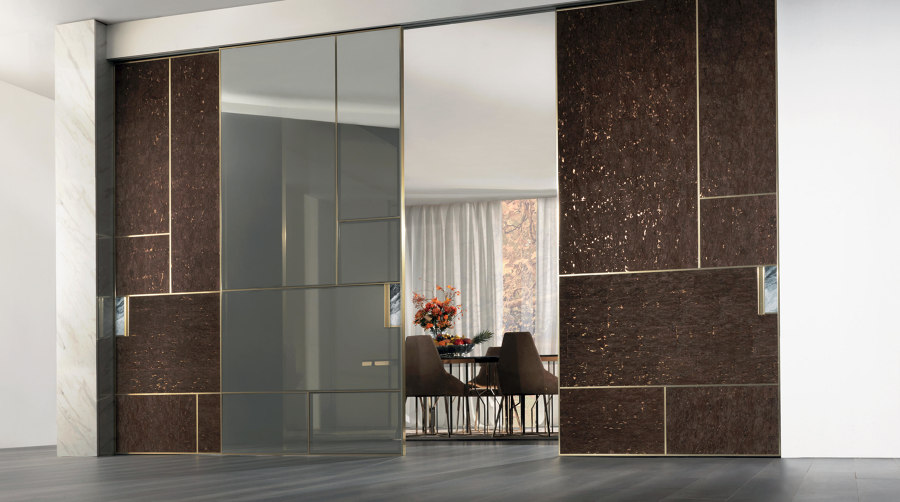
Both the Klein A45 cabins (top, middle) and Longhi S.p.a’s Land sliding doors (bottom) boast the use of cork as a highly visible surface material. Photos: Matthew Carbone (top)
×Cork does have natural beauty
Used to be that surfaces needed to be smooth and sleek to be considered beautiful. Post-environmental revolution, however, and we now see natural and circular materials as attractive for these qualities alone. Some still choose to keep cork hidden, and that’s fine, but others, like the prospective owners of these Klein A45 cabins, have their eyes open. Naturally insulating cork-lined walls fill the cabins with the beauty of nature. Longhi S.p.a’s Land range of modular storage units and doors, meanwhile, boasts cork as one of the high-end products’ quality material options.
Formafatal’s Cork Apartment served the client’s request for cork with waterproof coin-shaped cork tiles in the bathroom (top), and soft flooring in the kitchen-diner (bottom). Photos: BoysPlayNice
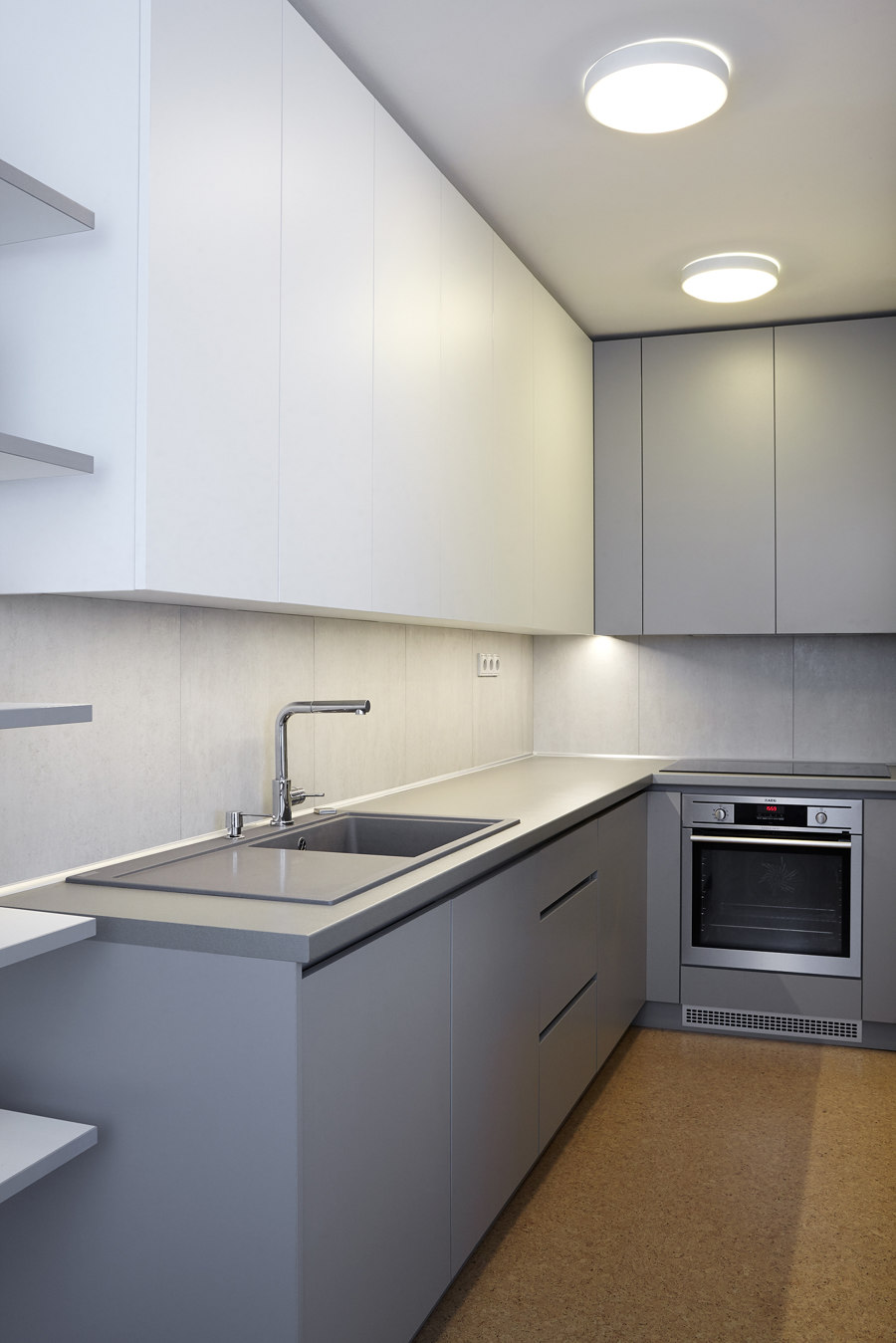
Formafatal’s Cork Apartment served the client’s request for cork with waterproof coin-shaped cork tiles in the bathroom (top), and soft flooring in the kitchen-diner (bottom). Photos: BoysPlayNice
×Cork does not absorb water
Cork is naturally waterproof thanks to Suberin, a waxy substance that makes up around half of the material, so cork flooring and tiles are perfectly suited to use in wet or high-humidity areas such as kitchens and bathrooms. Formafatal’s brief for the Cork Apartment in Prague, Czech Republic, was to ‘implement cork in the interior design as much as possible.’ In response, the interior architecture studio applied waterproof cork flooring in the kitchen area, an interesting mosaic of cork tiling alongside the bathtub and various other pieces of cork furniture and lighting throughout.
The soft floor in Adelaide Terrace (top) is easier to walk on, while Seattle Dentistry mixes the material with recycled rubber (bottom). Photos: Robert Frith (top), Lincoln Barbour (bottom)
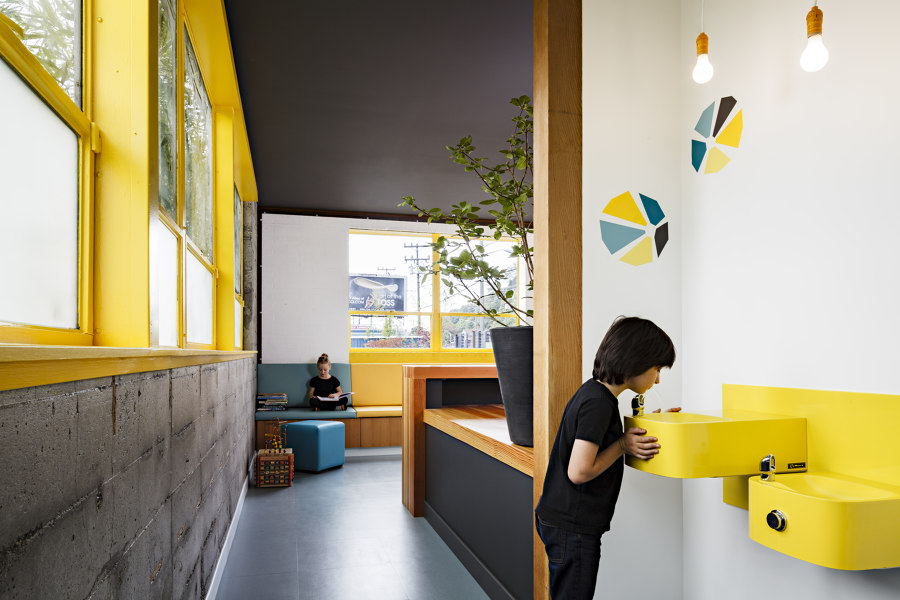
The soft floor in Adelaide Terrace (top) is easier to walk on, while Seattle Dentistry mixes the material with recycled rubber (bottom). Photos: Robert Frith (top), Lincoln Barbour (bottom)
×Cork is soft and yielding
It’s not just a low absorption rate that makes cork a great option for flooring. The owner of this Adelaide Terrace apartment, for example, was looking to downsize to a more manageable environment, suitable to ‘grow old’ in. Design considerations included the provision of a shower bench, handrail and soft cork flooring combined to make the space simpler, safer and more comfortable. Alternatively, at the Seattle Kids Dentistry, recycled rubber-cork flooring adds a smooth, colourful tone to its warm and welcoming environment.
Movecho’s Spherical Armchair with curved indentation (top), coverdec.one’s 3D cork panels, Linea (middle) and Locket’s undulating bar (bottom). Photo: Rebecca Hope

Movecho’s Spherical Armchair with curved indentation (top), coverdec.one’s 3D cork panels, Linea (middle) and Locket’s undulating bar (bottom). Photo: Rebecca Hope
×Cork is easy to shape
The naturally mouldable production methods of solid cork make it an excellent material to form curved furniture or three-dimensional surfaces. Movecho’s Spherical Cork Armchair, for example, ‘distinguishes itself through resilience, ergonomics and a warm softness,’ elements the chair’s manufacturers admit are ‘exclusive features of cork.’ Cork-loving wall panel manufacturer coverdec.one, meanwhile, combines cork’s insulating properties with its mouldable nature in sound-absorbing graphical Linea panels. While three-dimensional cork surfaces have also been selected at Locket’s café and wine bar in London, UK, where an undulating cork bar adds a warm texture to the hospitality space.
Cork tables at Tom Dixon’s monochromatic Manzoni Restaurant dining hall (top) and antoniolupi’s Borghi sinks with Cristalmood basins set on strong cork pedestals. Photo: Peer Lindgreen (top)
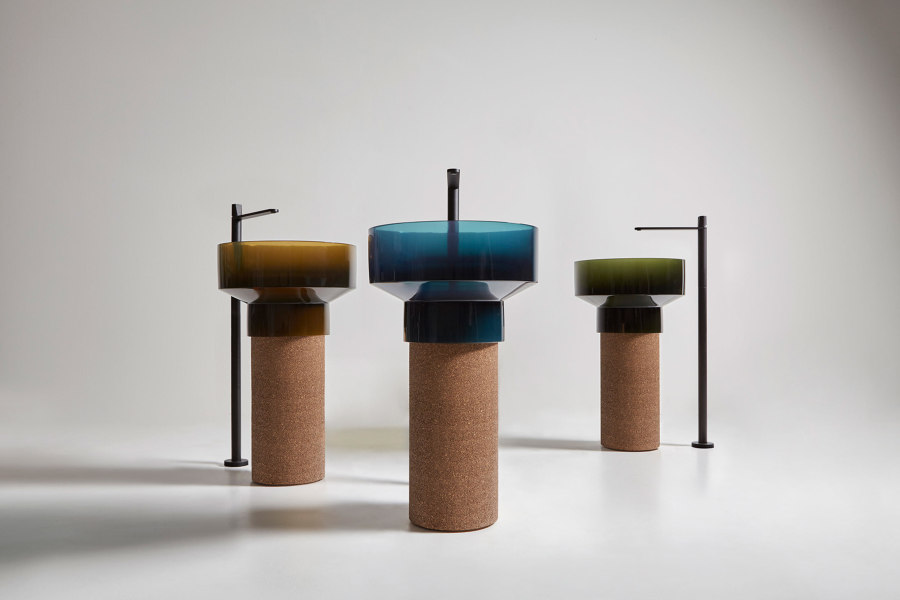
Cork tables at Tom Dixon’s monochromatic Manzoni Restaurant dining hall (top) and antoniolupi’s Borghi sinks with Cristalmood basins set on strong cork pedestals. Photo: Peer Lindgreen (top)
×Cork is surprisingly strong
For a material that looks a bit like a digestive biscuit and depresses when leaned on, cork can hold its own surprisingly well when strength is required. Selected as the material of choice for sturdy dining tables in Tom Dixon’s Manzoni Restaurant in Milan, Italy, the moulded-edge tables give a natural hint of colour to the monochromatic dining hall. Taking advantage of cork’s well-known waterproof nature, meanwhile, antoniolupi’s Borghi freestanding sink sits a heavy basin formed from Cristalmood atop a cork pedestal, contrasting colour and texture, but not style.
© Architonic
Head to the Architonic Magazine for more insights on the latest products, trends and practices in architecture and design.

